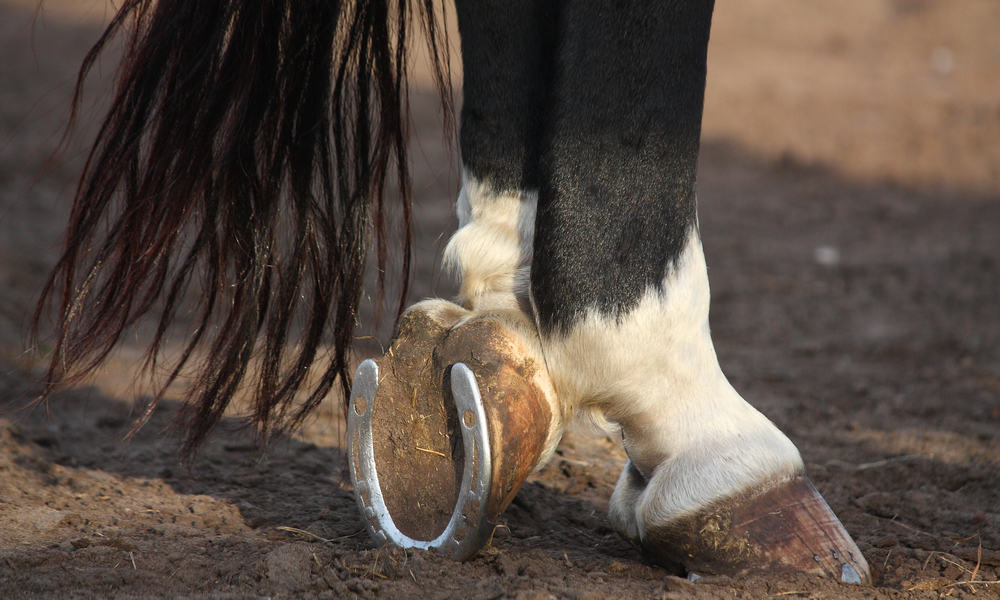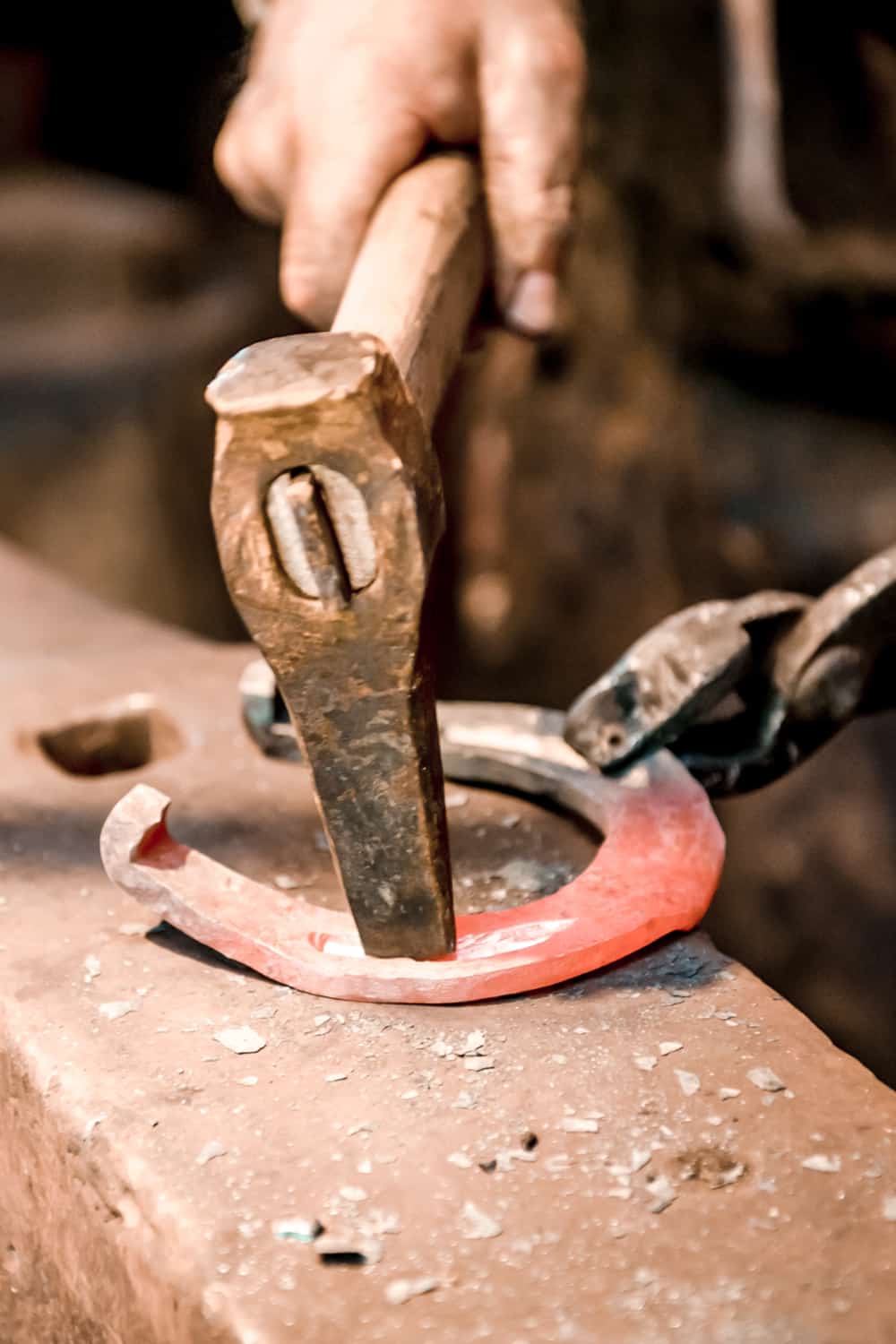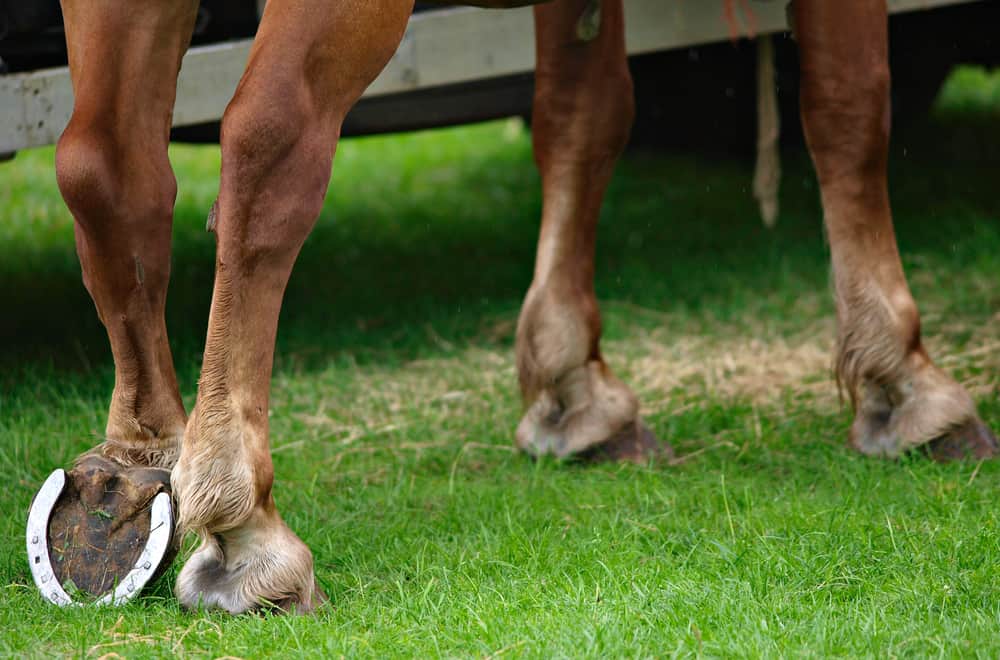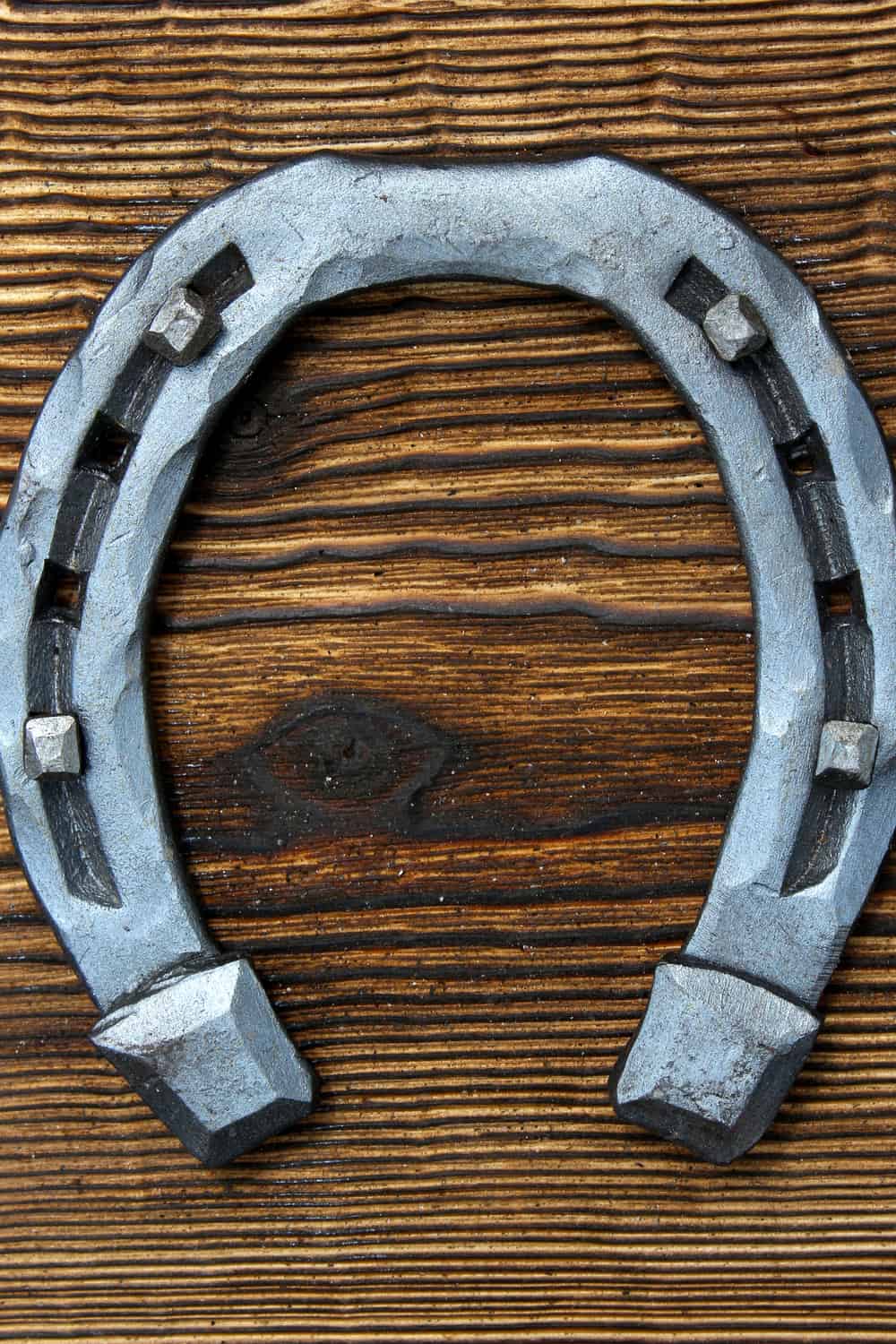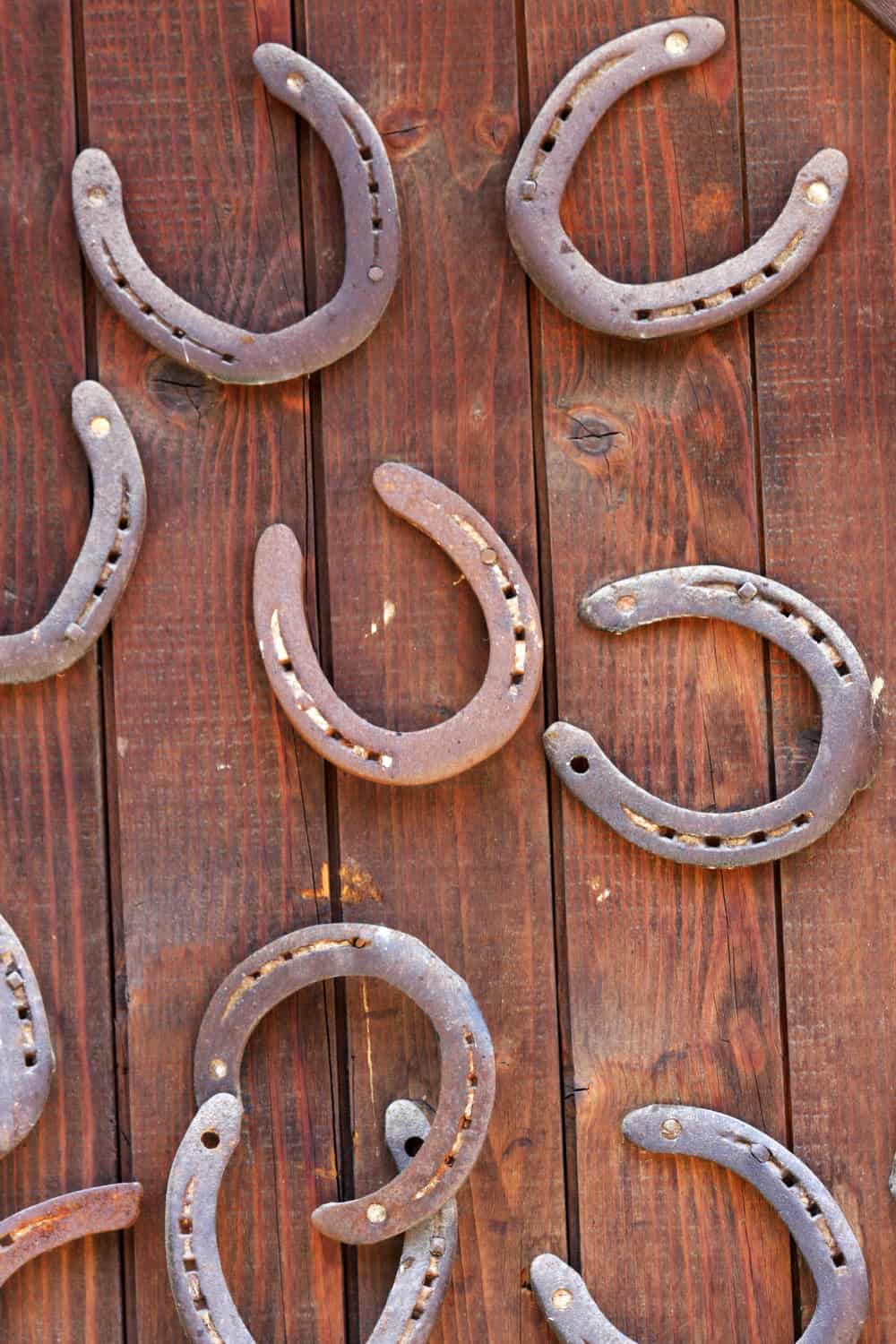Wild horses are like the fantastic barefoot runners of our time, whereas domesticated horses are more similar to the big-named shoe-sponsoring track-runners.
As a runner myself, I respect anybody, and by virtue, any animal that runs.
Running is as much a form of fitness and expression as it is a means to release and connect with the earth around us, performing one of the most natural activities that are a powerful means of supporting life for practically every species in existence.
This article will uncover the various types of shoes that a farrier may choose to put on a horse and their designed purposes.
Horse Shoe Basics
A horseshoe is a “U-shaped metal plate by which horses’ hooves are protected from wear on hard or rough surfaces.” History credits the blacksmiths of the Ancient Roman empire with the invention and earliest utilization of the horseshoe.
The process of crafting and fitting a horseshoe is an artform of ages gone; however, the modern-day domesticated horse has a selection of horseshoes to choose from that could line up an entire corner of Hooflocker.
Do Horses Need Shoes?
When the Ancient Romans and subsequent medieval clans were forging through the wet, slippery, and cold terrain of northern Europe, horseshoes helped to give their horses between traction underfoot.
Be that as it may, wild horses do not have a rewards member card for shopping at their nearest Hooflocker. Nevertheless, mother nature has it all figured out, even if the hoof structure is complex and delicate.
Domesticated horses are not usually afforded the same opportunity as their wild brethren to roam endlessly for miles per day, covering ground on all varieties of terrain.
This action is responsible for naturally trimming the horse’s hooves, keeping the feet of the wild horse healthy and even. However, when a domesticated horse spends a significant portion of its life in a stable or paddock, human hands must care for it.
Luckily for the domesticated horse, you might say, people quickly understood how critical the health of the hoof is. Without the work of the horse, I do not imagine how many empires would have ever existed. Their historical significance has helped develop and shape the world we live in today.
Asian civilizations were known to “wrap leather and other materials around the hoof for therapeutic purposes and to prevent sore feet” on their horses. Later, the Romans used a combination of leather and metal to outfit their horse’s hooves.
So since human intervention has graphed entirely new intentions for the domesticated horse, people must properly take care of its hooves. A trained farrier should fit the horse with shoes designed for its specific use while taking into consideration many factors, including:
- the shape or structure of the horse (also known as conformation)
- size and weight
- age
- working and living terrain
- workload (for example, towing farm equipment)
- action (shows, competitions, etc.)
A great deal of theoretical and anatomical knowledge regarding the intricate structure of the hoof now affords shoeing experts with more practical solutions for the health and wellness of domesticated horses.
Nowadays, farriers may use specific advancements in technology and materials to produce a variety of horseshoes that serve as therapeutic relief to the horse’s foot and the rest of its physical structure.
More specifically, therapeutically-designed horseshoes can improve a horse’s gait and significantly improve lameness symptoms. In addition, with specially fit shoes, a horse can continue to compete and enjoy an active lifestyle.
Material Types of Horse Shoes
As a horse owner, you will develop a lifelong friendship with a trained farrier if you haven’t already. It is inevitable because you will be receiving routine visits every 6-8 weeks from the farrier to maintain and adequately shoe your horse’s hooves.
A farrier is a “skilled craftsperson capable of shoeing all types of equine feet, whether normal or defective, of making shoes to suit all types of work and working conditions, and of devising corrective measures to compensate for faulty limb action.”
A farrier will look at the history of your horse’s health and consider its living atmosphere and intended purpose, amongst other things, to determine the best shoe for its feet.
Most conventional farriers use steel or aluminum in the construction of the horseshoe. But, again, the material that a farrier decides to use depends on the individual horse and will significantly impact its performance.
Steel is traditionally a more robust and sturdier option, whereas aluminum shoes may need more frequent replacement. Depending on whether your horse lives most of its life soft-footing (like in arenas) or does plenty of high-impact work will help your trusted farrier decide on the best option.
The shoeing industry has even designed a “rubber-coated steel shoe, which has the benefit of more grip and cushioning for the horse.” In addition, horseshoe manufacturers have been toying around with various other shoeing materials for the past few decades attempting to replicate the horse’s natural hoof more closely.
More lightweight options such as a polyurethane compound or composite with steel mesh inlays are constantly improving. One of the significant advantages of these alternative materials is that no holes have to be punctured into the hoof’s outer wall because a farrier can use glue for its installation.
Structural Types Of Horse Shoes
Although the type of material used is an important decision, your horse’s hoof structure will be a fundamental factor in pairing your horse with a proper shoe.
And because some horses naturally have a thicker outer wall on their hooves than others, particular shoes available to those horses may not be suitable to those with a thinner-walled hoof.
Let’s begin to explore the different types of horseshoes available. First, I will provide its typical vocabulary, and second include which horses may benefit most from its design.
1. U-Shaped Regular Shoe
The standard U-shaped shoe made out of steel is a choice farriers will choose for your horse if you are riding it daily and if your horse doesn’t have any other mobility-related special requirements to consider.
If you look at the shoe itself, you will notice a groove and a series of four holes on either side. The nails enter the evenly spaced holes, while the grooves give the heads of the nails appropriate space to sit safely.
2. Rim Shoe
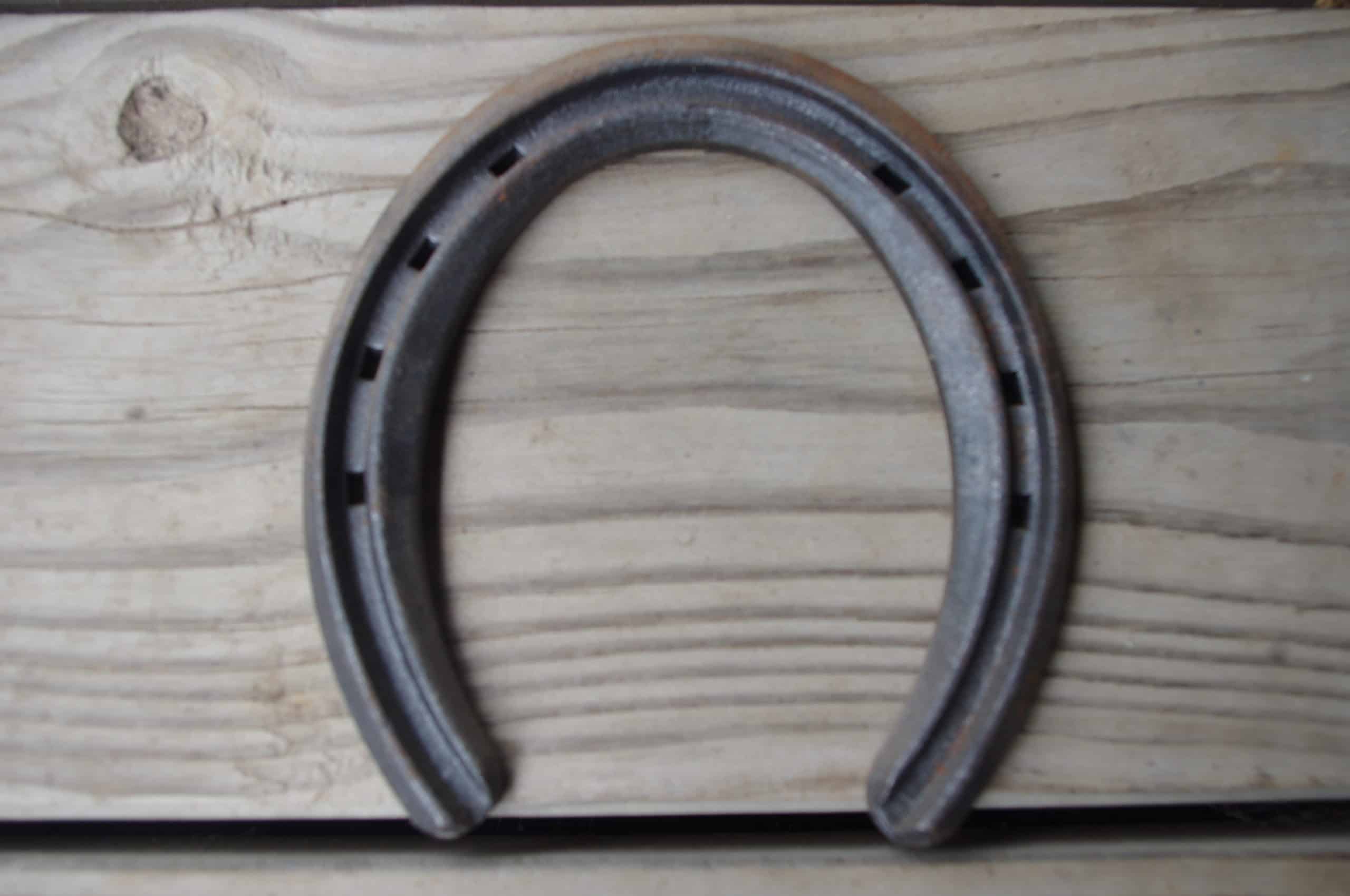
This particular shoe features a much deeper groove, although its design is similar to that of the typical U-shaped shoe. As a result, these shoes will give your horse more traction if it regularly competes in timed events where its speed, turning, and agility are critical.
3. Bar Shoe
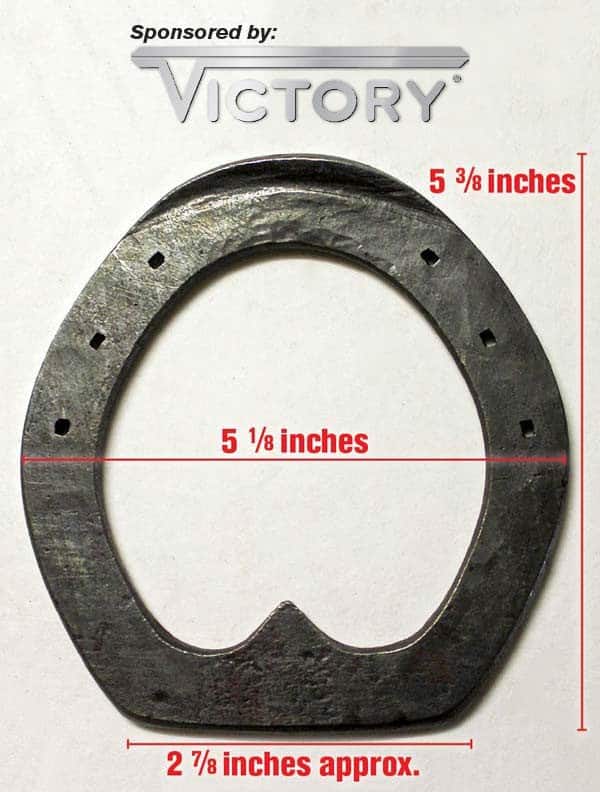
A bar shoe gives extra support to the rear portion of the horse’s hoof because it is crafted with an additional bar, creating a closed shoe rather than the open-ended U-shape.
If your horse has suffered a foot injury, a farrier may use this type of shoe to keep its hoof together.
4. Egg Bar Shoe
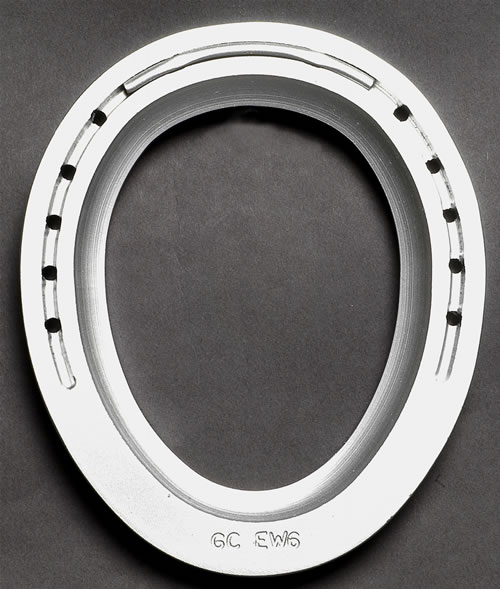
Similar to the bar shoe, this alternative is oval-shaped and extends past the heel. The extra extension of this shoe provides the horse with more support than a regular bar shoe.
The preferred material choice for this shoe is aluminum, and farriers find it relatively easy to place a wedge if required.
5. Heart Bar Shoe
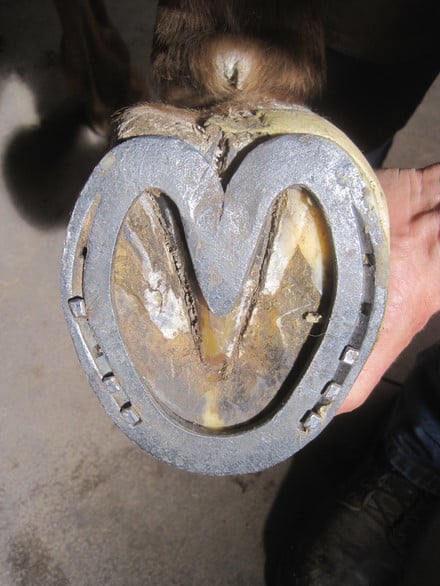
Sometimes a horse might be diagnosed with laminitis, which is the “damage and inflammation of the tissue between the hoof and the underlying coffin bone.”
In these situations, a horse will need extra support to its frog, the highly-sensitive V-shaped structure on the underside of the hoof structure. A heart-bar shoe is another excellent alternative for a horse needing additional foot support.
6. Clipped Shoes
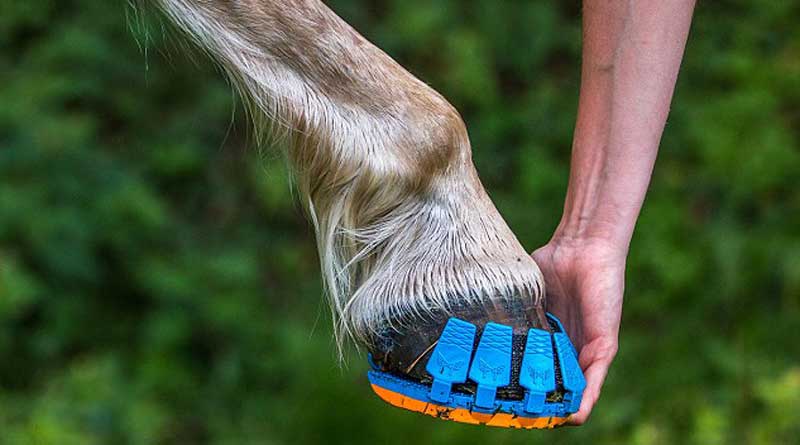
Encapsulated within the hoof structure is known as the coffin bone—the name sort of makes sense when you think about it. When this bone is fractured, a clipped shoe will provide a sturdier base for the horse.
It typically includes a toe clip or several (up to four) side clips to help the shoe stay on. A farrier can use this shoe as either a corrective or standard option, including horses that lose their shoes more easily.
7. Racing & Sliding Plate Shoes
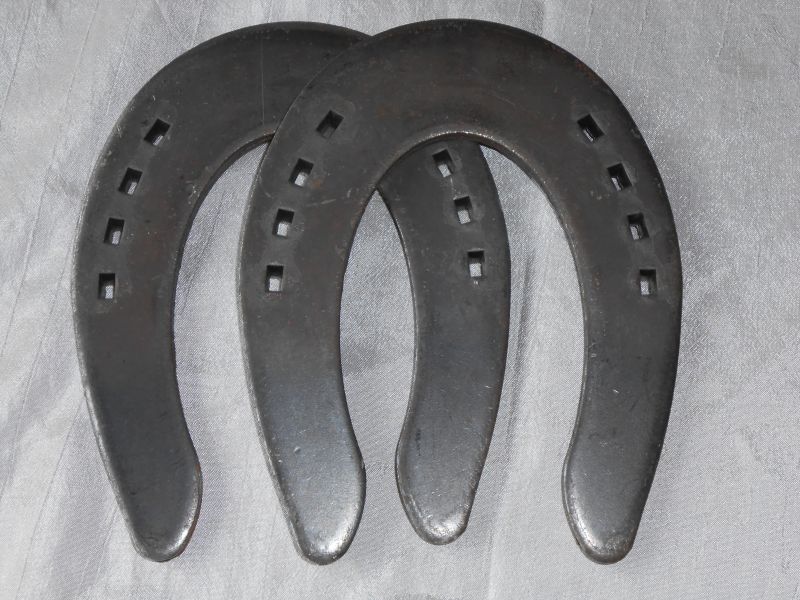
These shoe designs are for short-term use but may provide significant advantages to horses that race or perform in competitions. Sliding plate shoes offer competitive horses an edge for quick-stopping.
Racing plates are usually made from aluminum and offer adequate protection to a horse’s hoof while racing.
8. Wedge Shoes
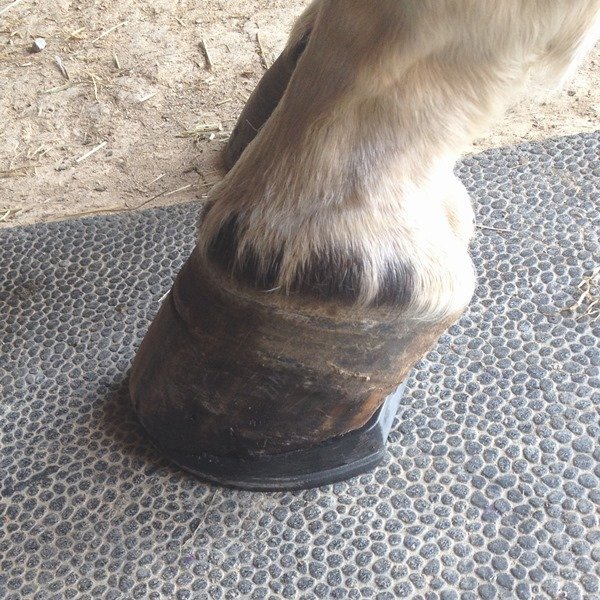
Horses that suffer sprained tendons or have navicular bone issues, tend to respond well to a wedged shoe. These shoes are “widely used to treat ailments that would respond to raising the foot angle.”
Raising the hooves foot angle tends to relieve pressure from affected areas of the hoof structure.
9. Glue-on Shoes
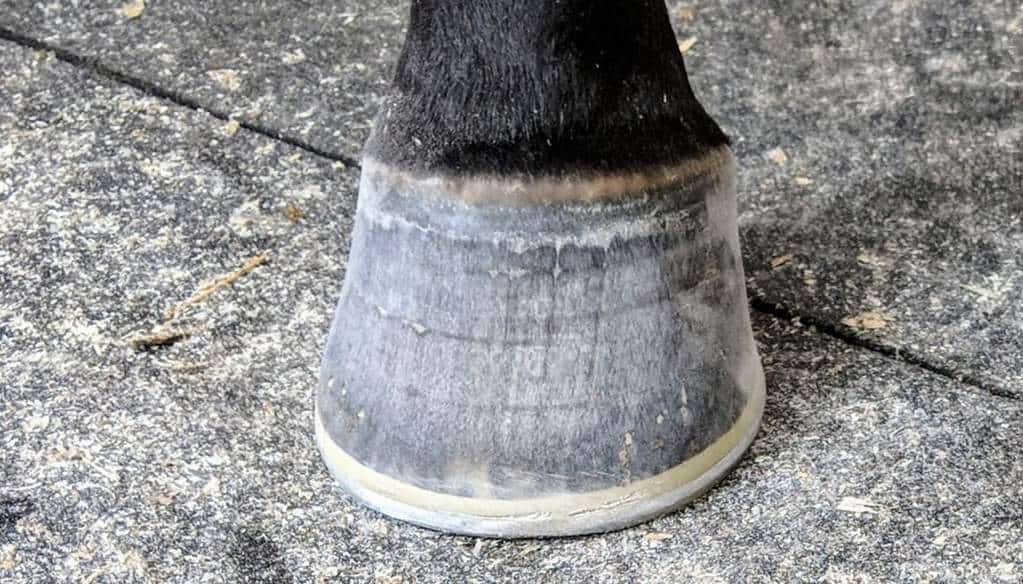
If your horse has thin outer walls on its hooves or has severe damage to its walls, your farrier may recommend a glue-on shoe. It is a great alternative, although not as long-lasting and usually more expensive than nail-on shoes.
Conclusion
Depending on the health and growth of your horse’s hooves, your farrier will regularly visit to trim and reshoe your horse. However, spending too many months without seeing your farrier may make your horse more vulnerable to some unpleasant foot condition.
It is important to remember that every individual horse will require different shoeing needs. Nevertheless, its foot care is essential to carry out its intended purpose as a cared-for domesticated animal.
The various types of shoes made for horses consider several functional and therapeutic purposes. Only an equestrian veterinarian or trusted farrier should be given the ultimate decision as to what will best fit your horse.
Would you please leave your questions and concerns about which type of shoe is most suitable for your particular horse in the comment section below?
